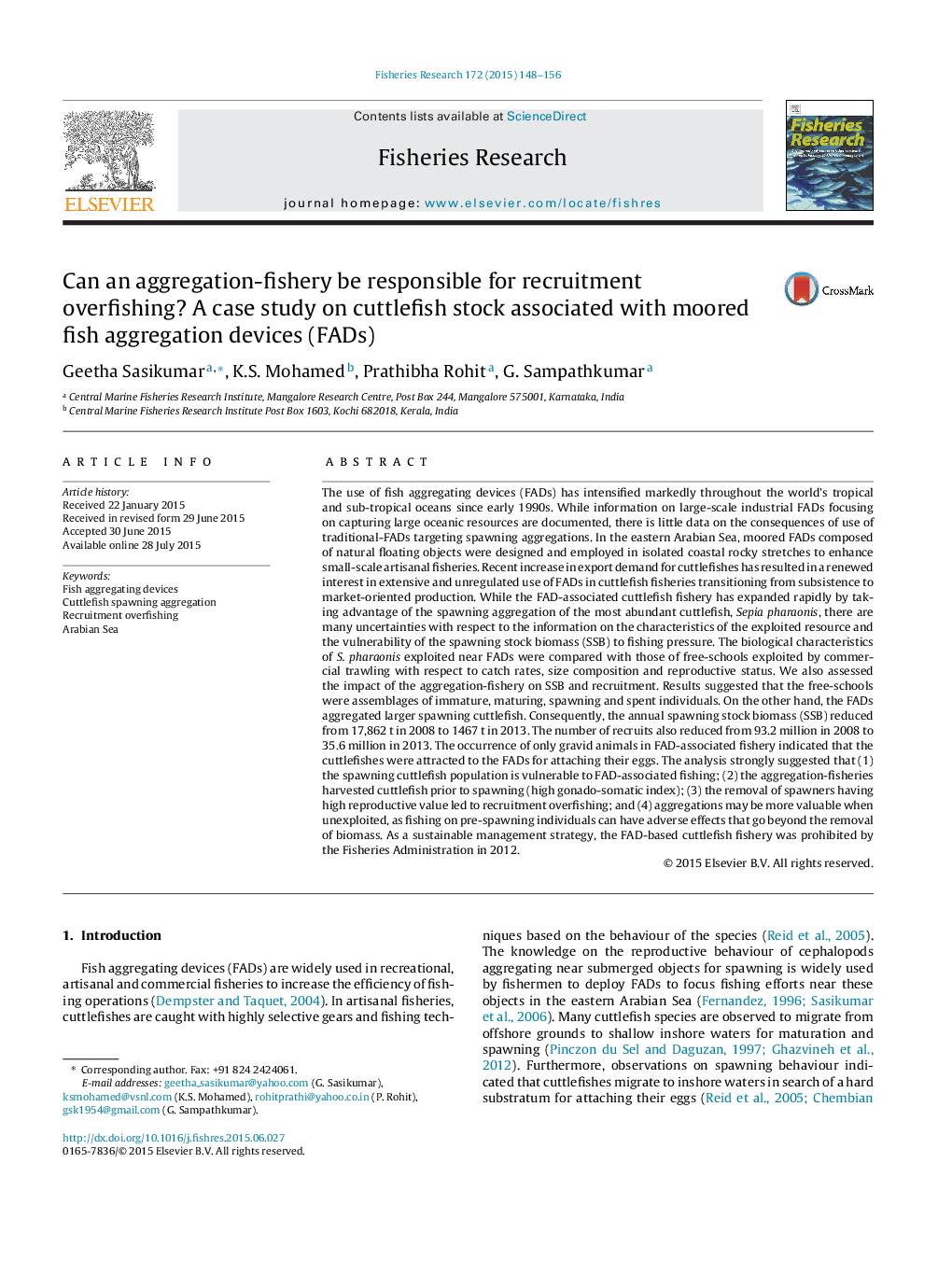| Article ID | Journal | Published Year | Pages | File Type |
|---|---|---|---|---|
| 6385426 | Fisheries Research | 2015 | 9 Pages |
The use of fish aggregating devices (FADs) has intensified markedly throughout the world's tropical and sub-tropical oceans since early 1990s. While information on large-scale industrial FADs focusing on capturing large oceanic resources are documented, there is little data on the consequences of use of traditional-FADs targeting spawning aggregations. In the eastern Arabian Sea, moored FADs composed of natural floating objects were designed and employed in isolated coastal rocky stretches to enhance small-scale artisanal fisheries. Recent increase in export demand for cuttlefishes has resulted in a renewed interest in extensive and unregulated use of FADs in cuttlefish fisheries transitioning from subsistence to market-oriented production. While the FAD-associated cuttlefish fishery has expanded rapidly by taking advantage of the spawning aggregation of the most abundant cuttlefish, Sepia pharaonis, there are many uncertainties with respect to the information on the characteristics of the exploited resource and the vulnerability of the spawning stock biomass (SSB) to fishing pressure. The biological characteristics of S. pharaonis exploited near FADs were compared with those of free-schools exploited by commercial trawling with respect to catch rates, size composition and reproductive status. We also assessed the impact of the aggregation-fishery on SSB and recruitment. Results suggested that the free-schools were assemblages of immature, maturing, spawning and spent individuals. On the other hand, the FADs aggregated larger spawning cuttlefish. Consequently, the annual spawning stock biomass (SSB) reduced from 17,862Â t in 2008 to 1467Â t in 2013. The number of recruits also reduced from 93.2 million in 2008 to 35.6 million in 2013. The occurrence of only gravid animals in FAD-associated fishery indicated that the cuttlefishes were attracted to the FADs for attaching their eggs. The analysis strongly suggested that (1) the spawning cuttlefish population is vulnerable to FAD-associated fishing; (2) the aggregation-fisheries harvested cuttlefish prior to spawning (high gonado-somatic index); (3) the removal of spawners having high reproductive value led to recruitment overfishing; and (4) aggregations may be more valuable when unexploited, as fishing on pre-spawning individuals can have adverse effects that go beyond the removal of biomass. As a sustainable management strategy, the FAD-based cuttlefish fishery was prohibited by the Fisheries Administration in 2012.
